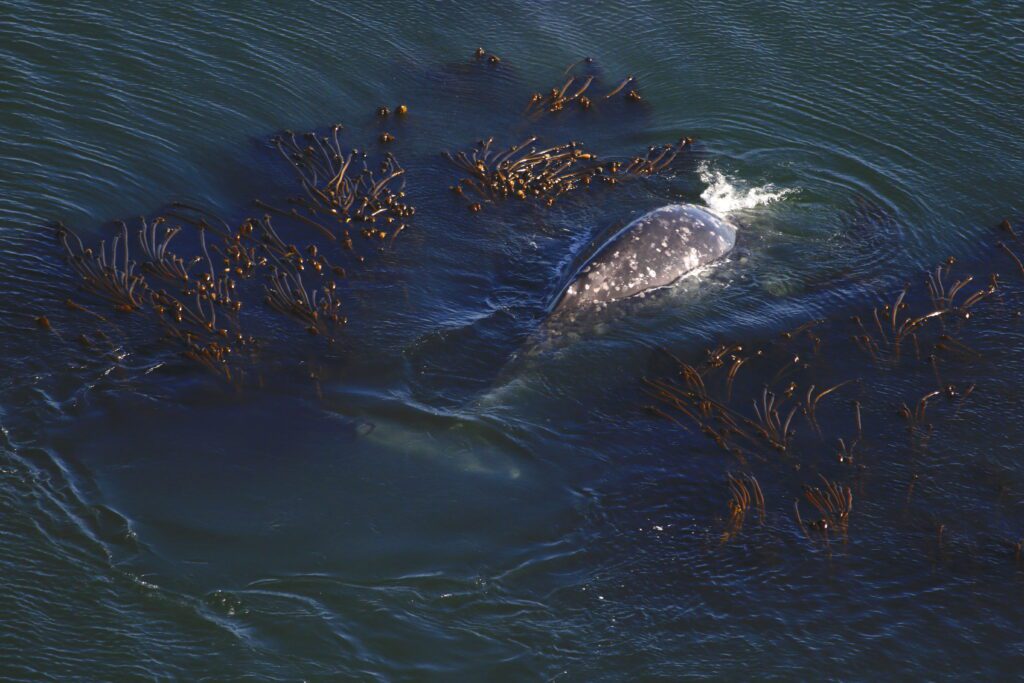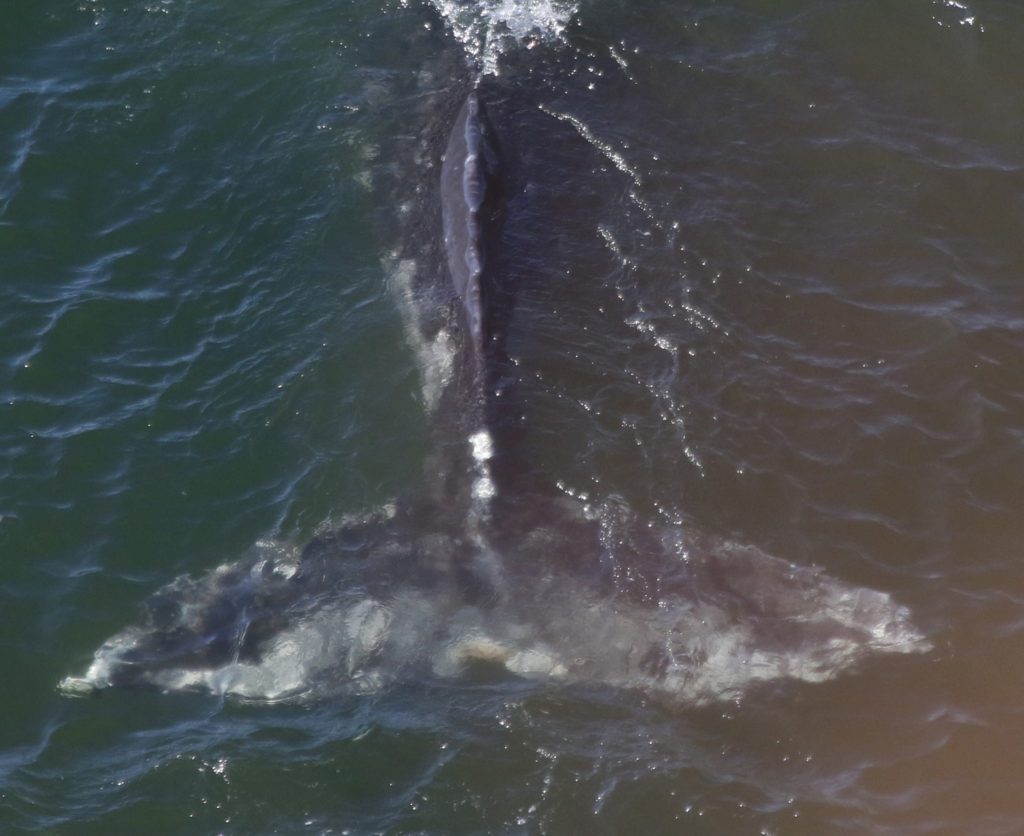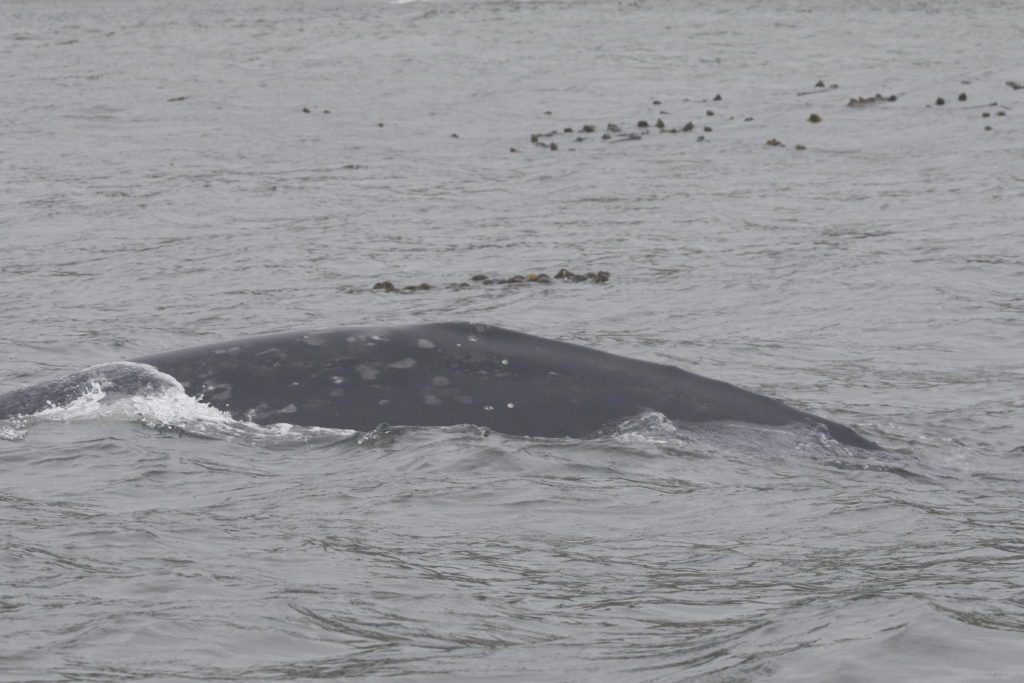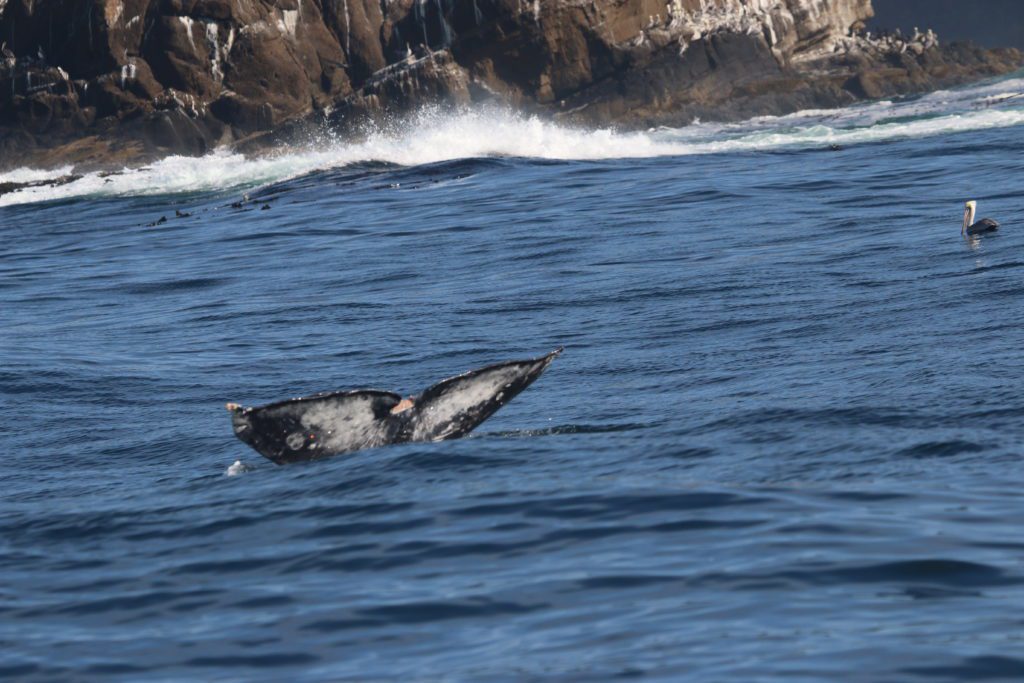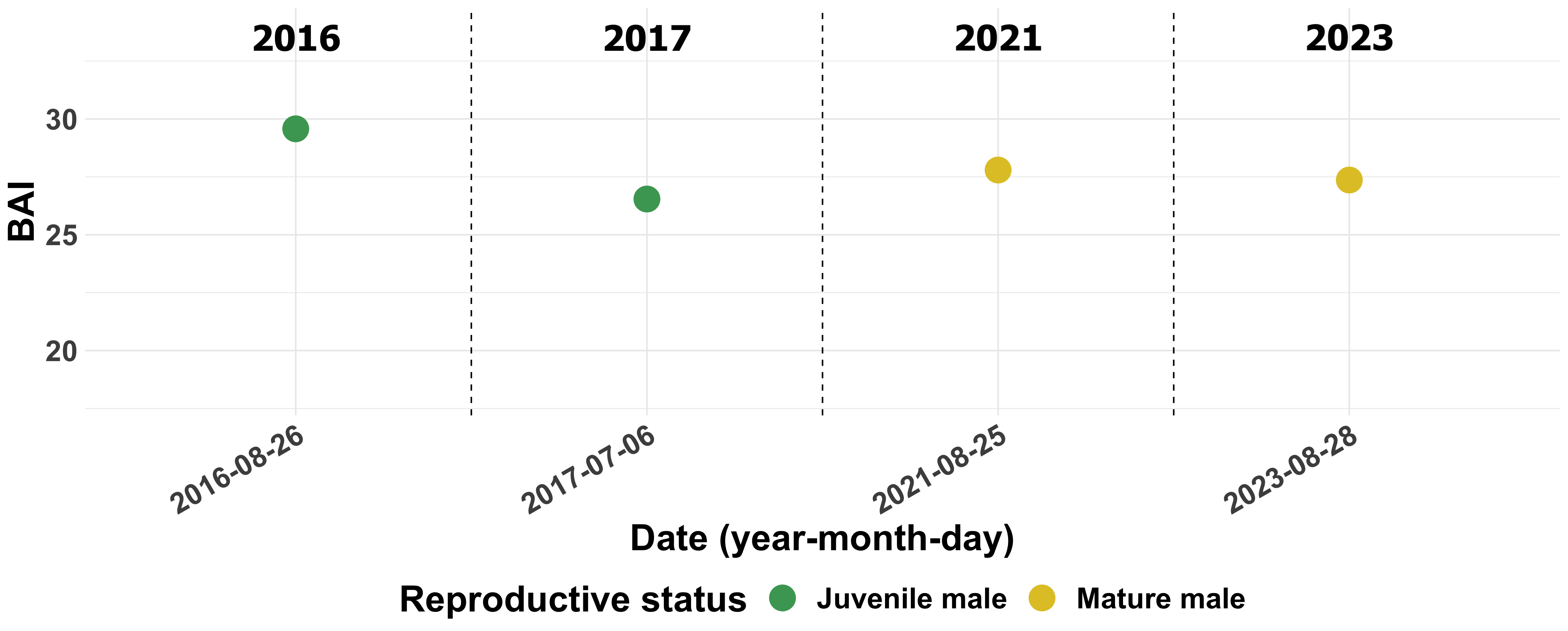Our research depends on using photo-identification of whales to link our many data streams (i.e., drone footage, fecal samples) to each whale, allowing us to make inferences about an individual’s health, behavior, and habitat use. While gray whales have very distinctive markings that we use to identify each whale, sometimes a whale’s appearance will change over time due to scars or changing skin condition. This potential for variation in appearance can play tricks on our eyes and minds that make the identification of certain whales tricky. A classic example of one such trickster is “Buttons”.
Buttons is a male gray whale first seen in the PCFG range in 2012 and we have documented in all but one year of our research since 2015. Buttons received his name due to the two distinctive dots on his caudal peduncle (tail area). While we have documented him regularly along the central Oregon coast, Buttons seems to have a strong affinity for the southern Oregon coast, where he frequently forages in our Port Orford study area. In fact, Buttons is so well-known and famous within the Port Orford community that he has been issued an honorary library card by the Port Orford Public Library. Despite being a popular and regularly sighted whale, Buttons has been misidentified and categorized as a new whale in our catalogue on three separate occasions! Three other whales in our catalogue of roughly 180 whales have also been misidentified three different times. While these misidentifications are relatively rare, it is critical that we avoid and correct them to keep our data accurate. Luckily, we have many careful eyes conducting photo-ID of our 1000s of photographs captured each summer, so these mismatches are caught and rectified. Nevertheless, it certainly can happen when whales have subtle or changing features, which is why it is important to for us to remain vigilant and double, if not triple, check our work!
Do you think you have what it takes to match gray whales correctly? Learn about how we identify individual whales and then test your skills in our matching game!


